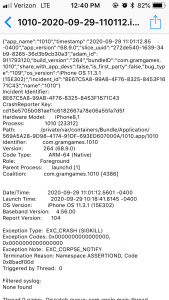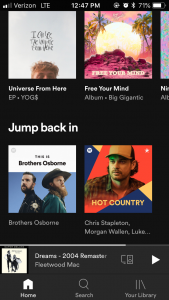Over the past week, I tried to keep track of the data that I produced while using my favorite phone applications. At first I went into my settings to try and find the hidden data that we are not offered to us unless we look for it. The problem is, once I found it, I wasn’t able to read it in order to understand what I had produced. As you can see on the first picture included with this post, the text is impossible to understand
. 
I then searched for more information that would be easier to understand like my daily average screen time. All my friends have been talking about it except me and the reason is that I haven’t updated my phone by fear of slowing it down. This meant I had no way to find such data unless I downloaded another application. I then went on Spotify, and as soon as I opened the app, the algorithm had figured out what I had been listening to it and offered me multiple playlists that I would probably like.

Lastly, since I spent most of the time on my phone on youtube, I decided to see what kind of data I produced. The first thing that I found was the main page that offers me videos based on my research history and previously watched videos.

What I found interesting while going over my produced data is that it was never given to me automatically. I always had to make the effort to find the data I produced while using applications. It is data that I produced yet it is hidden from us.
Hey Jerome, I loved this post – it really touches on some core themes that I’ve also been wrestling with. I also found the selective exhibition of our data to be extremely disconcerting. Spotify clearly hangs on to your data, as evidenced by their “Unwrapped playlists, so why do they choose to function as a black box instead of allowing us to really dig into the ones and zeros of what we produce? Is it because of a perceived lack of demand or is it intentionally designed to obstruct us from monitoring our data? This underscores the importance of informed consent while simultaneously calling its existence into question. It’d be super interesting to take a look at the regulatory precedent and see if there’s a way we can promote a greater transparency and ensure protect our proprietorship over our data. Can we even really consider it our data if we know that they collect our data and choose to engage in it anyways? At what point do we relinquish ownership? Your post evoked a lot of questions – overall a great read!